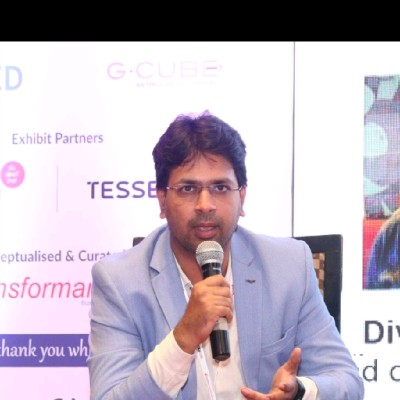Transforming Employee Learning Using Gamification in LXPs

In today’s fast-paced business world, leaders prioritizing and fostering a learning culture are more likely to steer their organizations toward success. However, the challenge is to make the learning process engaging and effective for employees. A solution that has been gaining popularity in recent years is the Learning Experience Platform (LXP) incorporating gamification. By offering relevant content and engaging learning experiences, an LXP with gamification can enhance the employee learning journey and drive the desired behavior change.
What is Gamification in LXPs?
Gamification in LXPs refers to using game mechanics, such as points, badges, and leaderboards, in non-game contexts to increase engagement and motivation. It involves applying the principles of game design and psychology to learning activities, making them more enjoyable and compelling. In the context of LXPs, gamification enhances the learning experience by providing learners with a sense of accomplishment and progress as they complete learning activities.

Companies that have implemented gamification in their LXPs have reported an average increase of
in Employee Engagement Rates
Knowledge Retention
in Course Completion Rates
in Learning Effectiveness
in Employee Motivation Rates
in Collaboration and Teamwork Rates
The Benefits of Gamification in LXPs

The use of gamification in LXPs offers several benefits that can significantly impact the effectiveness of employee training and development initiatives. Some of the key benefits include:
Increases Learner Engagement
Gamification provides learners with a clear sense of progress and achievement, which motivates them to continue their learning journey. Points, badges, and leaderboards create a sense of competition and challenge, encouraging learners to participate in learning activities actively and strive for higher achievements. Gamification also helps learners feel more invested in their learning by giving them a sense of ownership and control over their progress.
Improves Knowledge Retention
Gamification enhances knowledge retention by providing learners with a more immersive and interactive learning experience. For example, using gamification techniques such as scenario-based learning allows learners to apply their knowledge in realistic situations, helping them retain information more effectively. Additionally, using immediate feedback and rewards in gamification helps reinforce learning, leading to better retention of learned content.
Enhances Quality of Learning
Gamification incorporates game mechanics such as feedback and rewards, which provide learners with immediate feedback on their progress. This helps them identify areas where they need to improve and encourages them to strive for better performance. Gamification also encourages learners to explore different learning paths, try new approaches, and experiment with different solutions, leading to a deeper understanding of the content and a more holistic learning experience.
Best Practices for Gamification in LXPs

To implement gamification in LXPs effectively, organizations should follow certain best practices. Some of the key best practices include:
- Relevance to learning objectives: Gamification should be aligned with the learning objectives and not used solely for engagement purposes. The game mechanics and elements should be directly connected to the learning content and activities, reinforcing the learning outcomes and promoting meaningful engagement.
- Challenging but not overwhelming: Gamification should strike the right balance between challenge and manageability. It should be designed to motivate learners without creating a sense of frustration or disengagement. The difficulty level of the game mechanics should be appropriately calibrated, taking into consideration the skill level and background of the learners.
- Inclusivity and accessibility: Gamification in LXPs should be inclusive and accessible to all learners, regardless of their abilities, disabilities, or backgrounds. Organizations should ensure that the game mechanics do not discriminate against any learner group and that they are designed to promote diversity, equity, and inclusion.
Conclusion

In conclusion, gamification in LXPs can certainly enhance the effectiveness of employee training and development initiatives. By incorporating game mechanics into the learning experience, organizations will be able to increase learner engagement, improve knowledge retention, and enhance the quality of learning. Certainly, adhering to best practices is crucial to ensure that gamification aligns with the learning objectives, strikes the right balance between challenge and manageability, and promotes inclusivity and accessibility for all learners. Through meticulous planning and implementation, gamification in LXPs can foster a more engaging and immersive learning experience, ultimately resulting in enhanced employee performance and motivation.
How can enablED effectively address your current and future L&D needs?
In today’s rapidly evolving world, the need for effective learning and skill development is paramount across diverse industries such as healthcare, financial services, NGOs, publishing, and universities.
enablED, with its gamified Learning Experience Platform, offers a rich and engaging learning environment that caters to both internal and external audiences. From courses and knowledge base resources to videos, articles, quizzes, webinars, and live interactive sessions, enablED enables distributed, mobile, and remote workforces, customers, and prospects to access and engage with a wide range of content. By leveraging enablED’s platform, organizations can empower their stakeholders with the knowledge and skills needed to adapt to changing learning needs, stay competitive, and thrive in the digital age.

